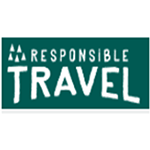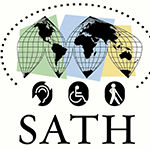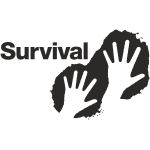
Tackle Disruptions, Safeguard Business Continuity, and Collaborate for Stronger Strategies

Risks
Risks: 12 Questions for Strengthening and Protecting the Tourism Enterprise
Key to Success
In this section, we would like to make sure that Small and Medium-sized Tourism Enterprises (SMTEs) should be aware of the following:
- Understanding how different risks can disrupt operations, affect traveler demand, and impact business performance.
- We are developing risk management strategies, such as crisis management plans, insurance coverage, and contingency planning, to minimize the impact of risks and ensure business continuity.
- The role of collaboration and knowledge-sharing in risk management includes collaborating with industry partners and stakeholders to develop more effective risk management strategies.
Accomplishments
In this step, we’ll:
- Identify the most critical threats and opportunities our business is under.
- Address these risks to be responded to.
Time-Saving Tools
We’ll complete all sections of this chapter more quickly if we have any of the following handy:
- The tourism destination market plan and strategic plan.
- The trade travelers and other relevant stakeholders.
- Tourism road maps offered by the tourism destination
- Benchmarking innovation initiatives in the tourism destination.
- Risk analyses about innovation initiatives.
- All documents could be applied to find relevant information.
Presentation
Risks are an inherent part of operating a business in the tourism industry. There are severe threats and opportunities that Small and Medium-sized Tourism Enterprises (SMTEs) may face, such as economic, environmental, operational, legal, and reputational risks. These threats and opportunities can impact the business’s financial performance, traveler satisfaction, and overall success.
Here are some things Small and Medium-sized Tourism Enterprises (SMTEs) should keep in mind about threats and opportunities:
- Identify and assess risks: Small and Medium-sized Tourism Enterprises (SMTEs) should identify and evaluate the threats and opportunities we may face. This can include conducting a threats and opportunities assessment to identify potential hazards and vulnerabilities and assess each risk’s likelihood and potential impact.
- Develop a risk management plan: Small and Medium-sized Tourism Enterprises (SMTEs) should develop a risk management plan once threats and opportunities have been identified and assessed. This plan should outline the strategies and tactics that will be used to mitigate or manage each threat and opportunity.
- Communicate with stakeholders: Small and Medium-sized Tourism Enterprises (SMTEs) should communicate with stakeholders, such as employees, travelers, and suppliers, about the threats and opportunities they may face and the measures being taken to manage those threats and opportunities. This can help to build trust and confidence in the business.
- Monitor and review: Small and Medium-sized Tourism Enterprises (SMTEs) should monitor and review our risk management plan regularly to ensure it is effective and up-to-date. We should also be prepared to adapt our plan as necessary to respond to changing circumstances.
Small and Medium-sized Tourism Enterprises (SMTEs) should view risk management as a critical component of our business operations. By identifying, assessing, and managing risks effectively, Small and Medium-sized Tourism Enterprises (SMTEs) can reduce the likelihood and impact of adverse events and ensure the long-term success of their business.
All of these risk categories and examples could impact our business, which does not intend to exhaust:
- Business model threats include reliance on a single product or traveler segment.
- Economic threats, such as exchange or interest rate changes.
- Competitive threats, such as new entrants or changing traveler preferences.
- Operational threats, such as equipment failure or supply chain disruptions.
- Partnership threats, such as profit sharing or decision-making.
- Revenue stream threats include overdependence on a single revenue stream or seasonality.
- Reputational threats, such as negative reviews or social media backlash.
- Human resource threats, such as turnover or a shortage of skilled labor.
- Legal threats, such as changes in regulations or lawsuits.
- Security threats, such as theft or cyber-attacks.
- Environmental threats, such as natural disasters or climate change.
- Health and safety threats, such as accidents or disease outbreaks.
GUIDING QUESTIONS
How can we promote responsible and sustainable practices throughout our risk management? Implementing eco-friendly initiatives and supporting local communities will contribute to small tourism enterprises' long-term success and reputation within our risk management.
YScala
A suggestion of guiding questions that are not intended to exhaust the topic:
- What type of risk analysis (qualitative and quantitative) will we operate?
- What are the opportunities our business can leverage?
- How will we identify and respond to our threats and opportunities?
- Who is our risk manager?
- What impacts could there be on resources as a result of product development?
- What are the potential risks and challenges facing our business in the destination, such as changes in travel patterns, natural disasters, political instability, and health and safety concerns?
- Can we create switching costs once a traveler works with us?
- What are the most critical threats we are exposed to? How can we be mitigated?
- What are the most significant opportunities we are exposed to?
- What would we do if we lost our most significant competitive advantage?
- What are potential bottlenecks?
- What would our business look like if we handed over a part of our value-creation process to the supplier?
These questions can help Small and Medium-sized Tourism Enterprises (SMTEs) identify and assess the threats and opportunities we may face and develop a risk management plan to mitigate or manage those risks. Therefore, it is essential to regularly review and update the risk management plan to ensure that it remains effective and up-to-date.
Table of Contents
Let your like and recommend this post to improve your audience!
Share this post with friends, colleagues, or anyone else who might be interested.
Comments:
We invite you to engage with our community, share your perspectives, and contribute to this meaningful conversation by commenting below. Your experiences and ideas can help others in their sustainable tourism development management journey.













